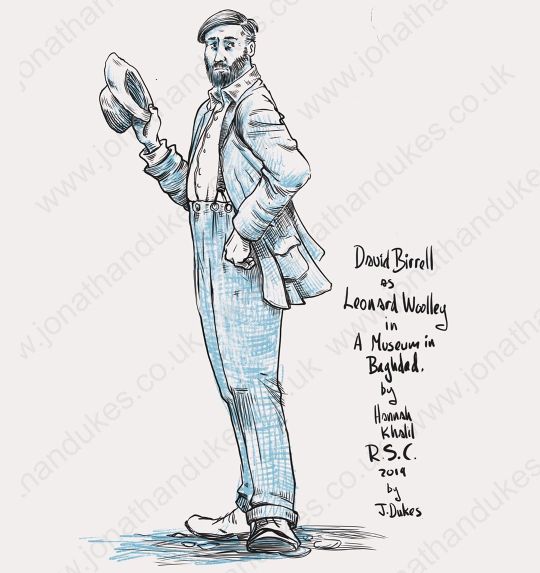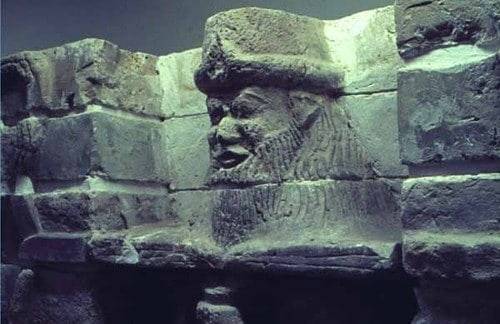#IraqMuseum
Photo

The Iraq Museum & Three Wars: Three Steps from Hell
This article documents and elaborates on the many critical behind-the-scenes events, unknown to the public, before the history leaves us.
The author
The bulk of the “the land between the two rivers” lies in what we call today the Republic of Iraq. People have been living there, around and between the Euphrates-Tigris system for thousands of years. The earth of this land has been irrigated by these two rivers and throughout several millennia, a multitude of cultures, city-states, and empires flourished in Mesopotamia, resulting in a gradual development in each and every aspect of human life. However, the interaction between them was not always peaceful. Wars, military confrontations, and political coalitions, driven by the perspective of “the victors and the vanquished”, have made the land ever eager for blood instead of water. Throughout the history of the region, no one knows how many people have been killed in clashes between countless different rivals. The last actor in this continuous black comedy was the so-called Islamic State in Iraq and the Levant, which has been irrigating Mesopotamia with different types of blood, from all around the world.
Wars and blood, instead of peace, doves, and flowers, dominated and shaped Mesopotamian history. Iraq, the legitimate heir of this legacy (by the order of destiny), the core of the Cradle of Civilizations, still bleeds. The Iraq Museum in Baghdad was officially opened on June 14, 1926 CE. The current building in Al-Salihiyyah District was completed in 1963 CE. Located within the heart of the Republic of Iraq’s capital city, Baghdad, this great Museum of the human being and humanity’s history has sustained several “life-threatening and function-threatening” events. The Iraq Museum’s existence and persistence have been punctuated by three devastating wars within a relatively short period of time.
The Iraq-Iran War, 1980-1988 CE
A military conflict erupted in September 1980 CE between Iraq and its neighbor, Iran, resulting in the longest war in the 20th century. The war lasted for 8 years and ended on August 8, 1988 CE. These 8 years left their thumbprint on Mesopotamian history and resulted in a negative impact on the Iraq Museum. According to Iraqi laws, museums should close in wartime. At the beginning of the 1981 CE, the contents of the galleries of the Iraq Museum were packed and stored inside the museum itself. The large Assyrian stone slabs and several statues were left in situ, protected by foam and sandbags. This had rendered the museum virtually inactive; however, it was not closed officially. People simply ceased visiting the museum, as the galleries were somewhat empty. In 1983 CE, the construction of a new wing had increased the number of the museum’s halls and galleries from 13 to 23; the Babylonian-Chaldean, Hatra, Islamic, Manuscripts, and Coins halls received the bulk of this expansion. Some of the stored contents were re-displayed again and the new galleries were filled in with many artifacts. However, this short period was terminated rapidly with the escalation of the war. Once again, the relics were packed and stored and the museum’s halls were lifeless. Luckily, the Museum escaped damage incurred by the so-called “War of the Cities” between 1984-1988 CE (where both Iraq and Iran bombarded different cities haphazardly, resulting in the deaths of thousands of non-combat civilians and wide-spread civilian infrastructure attrition. When the war ended in August 1988, the museum’s day-to-day operations were mainly administrative; the public was not here.
Continue reading...
36 notes
·
View notes
Photo

David Birrell as Leonard Woolley, in the rsc production of A Museum in Baghdad, scribbled by me. Written by Hannah Khalil, directed by Erica Whyman. @thersc #rscmuseum @intertalentactors @intertalentgroup #stratforduponavon #actors #theatre #hannahkhalil #iraq #iraqmuseum #nationalmuseumofiraq https://www.instagram.com/p/B4xMHivnS1a/?igshid=1w4emx5juiqhs
1 note
·
View note
Photo

من مقتنيات #المعبد_الابيض في #اوروك والان موجود في #المتحف_الوطني_العراقي ، #بغداد . #City and #WhiteTemple , #Uruk -#Warka, #Iraq, c. 3200 BC. #Karaindash #Temple, #Kassite c. 15th cent. BC. Detail of molded brick male #deity (#IraqMuseum). #اتموبيديا #Etymopedia https://www.instagram.com/p/BomzcdVAErf/?utm_source=ig_tumblr_share&igshid=bad2i5ckzfp7
#المعبد_الابيض#اوروك#المتحف_الوطني_العراقي#بغداد#city#whitetemple#uruk#warka#iraq#karaindash#temple#kassite#deity#iraqmuseum#اتموبيديا#etymopedia
0 notes